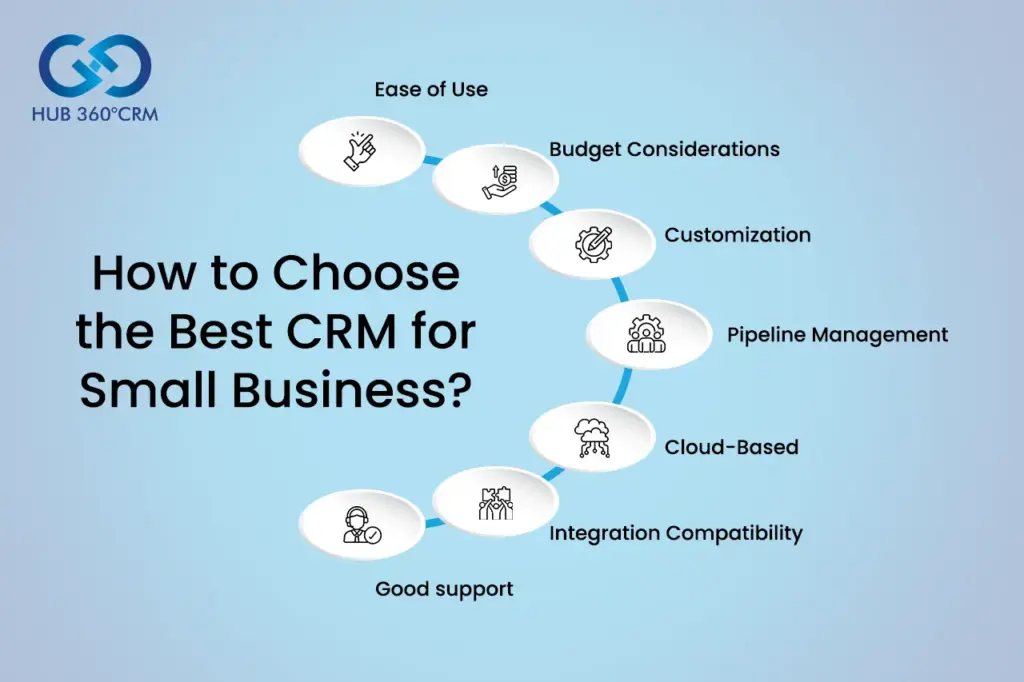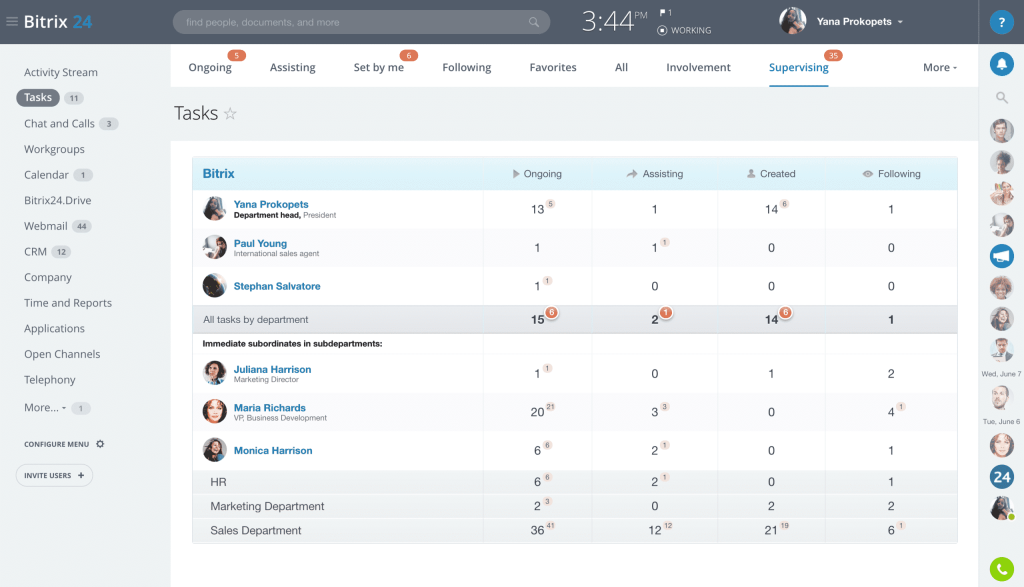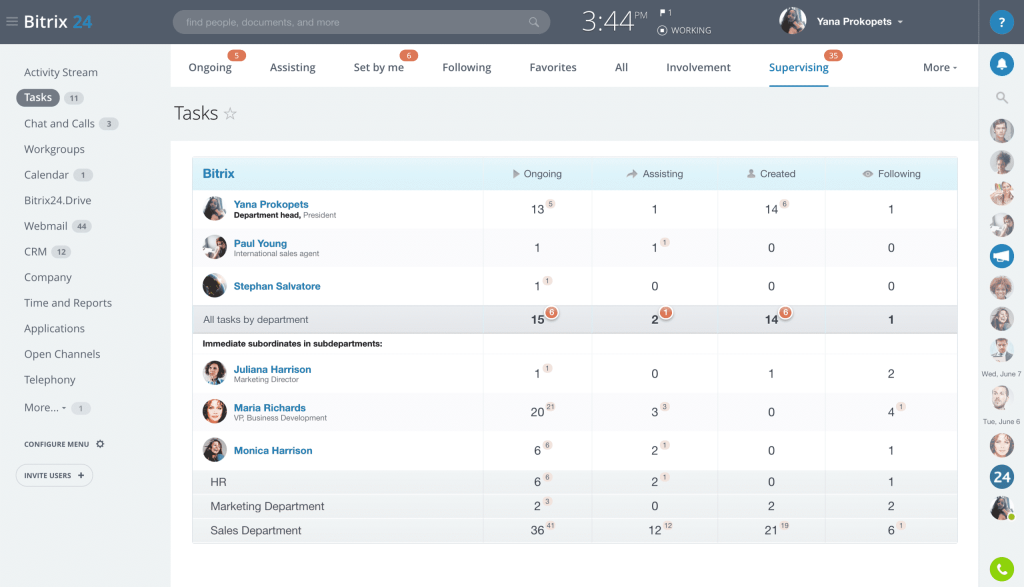
Introduction: Why Small Businesses Need a CRM
Running a small business is a whirlwind. You’re juggling a million things – from product development and marketing to sales and customer service. Amidst all this chaos, it’s easy for customer relationships to get lost in the shuffle. That’s where a Customer Relationship Management (CRM) system comes in. Think of it as your central hub for all things customer-related. It’s not just a fancy piece of software; it’s a strategic investment that can transform how you interact with your customers and, ultimately, how successful your business becomes.
In today’s competitive landscape, customers have options. They’re not loyal to brands; they’re loyal to experiences. They remember how you make them feel, how responsive you are, and how well you understand their needs. A CRM empowers you to deliver these exceptional experiences, building lasting relationships that drive repeat business and positive word-of-mouth referrals. This article will delve into practical, actionable CRM tips specifically tailored for small businesses, helping you choose the right system, implement it effectively, and leverage its power to achieve your goals.
Choosing the Right CRM for Your Small Business
The CRM market is vast, with a plethora of options vying for your attention. The key is to find the one that aligns with your specific needs, budget, and technical capabilities. Don’t get swept away by flashy features you’ll never use. Focus on what’s essential for your business.
1. Define Your Needs and Goals
Before you even start browsing CRM providers, take a step back and define your objectives. What do you want to achieve with a CRM? Are you primarily focused on improving sales, streamlining customer service, or enhancing marketing efforts? Consider these key questions:
- What are your current pain points? What processes are inefficient or time-consuming?
- What are your key performance indicators (KPIs)? How will you measure the success of your CRM implementation?
- What are your budget constraints? CRM pricing varies widely, from free options to enterprise-level solutions.
- What are your team’s technical skills? Opt for a user-friendly system that your team can easily adopt.
Answering these questions will help you narrow down your choices and prioritize features that are crucial for your success.
2. Research and Compare CRM Options
Once you have a clear understanding of your requirements, it’s time to start researching potential CRM solutions. Here are some popular options for small businesses:
- HubSpot CRM: A free, all-in-one CRM with powerful features for sales, marketing, and customer service. It’s known for its user-friendliness and extensive integrations.
- Zoho CRM: A comprehensive CRM with a wide range of features, including sales force automation, marketing automation, and customer support. It offers various pricing plans to suit different business sizes.
- Salesforce Essentials: A scaled-down version of Salesforce, designed specifically for small businesses. It offers a robust set of features, but can be more complex to set up than other options.
- Pipedrive: A sales-focused CRM that’s known for its visual pipeline management and ease of use. It’s a great option for businesses that prioritize sales efficiency.
- Freshsales: Another sales-focused CRM with features like built-in phone, email, and chat. It’s known for its affordable pricing and intuitive interface.
When comparing options, consider the following factors:
- Features: Does the CRM offer the features you need, such as contact management, lead tracking, sales pipeline management, email marketing integration, and customer support ticketing?
- Ease of Use: Is the interface intuitive and easy to navigate? Can your team quickly learn how to use the system?
- Integrations: Does the CRM integrate with the other tools you use, such as your email provider, website, and accounting software?
- Pricing: Does the pricing align with your budget? Consider the total cost of ownership, including implementation, training, and ongoing support.
- Customer Support: Does the CRM provider offer reliable customer support? Are there training resources and documentation available?
3. Consider Scalability
Choose a CRM that can grow with your business. As your company expands, your CRM needs will evolve. Ensure the system you select can accommodate increased data volume, additional users, and new features without requiring a complete overhaul.
4. Free Trials and Demos are Your Friends
Before making a final decision, take advantage of free trials and demos. This will allow you to test the system’s features, assess its usability, and determine if it’s the right fit for your team. Don’t be afraid to ask questions and explore all the functionalities.
Implementing Your CRM: A Step-by-Step Guide
Once you’ve selected your CRM, the real work begins: implementation. Successful implementation is crucial for realizing the full potential of your CRM investment. Here’s a step-by-step guide to help you get started.
1. Plan Your Implementation
Before you dive in, create a detailed implementation plan. This plan should include:
- Timeline: Set realistic deadlines for each stage of the implementation process.
- Team Roles and Responsibilities: Assign roles to team members and define their responsibilities for data migration, training, and ongoing maintenance.
- Data Migration Strategy: Determine how you will migrate your existing data into the CRM. This may involve importing data from spreadsheets, databases, or other systems.
- Training Plan: Develop a training plan to ensure your team understands how to use the CRM effectively.
2. Data Migration: Clean and Organize Your Data
Data migration is a critical step. The accuracy and completeness of your data will directly impact the effectiveness of your CRM. Before importing your data, take the following steps:
- Clean Your Data: Identify and correct any errors or inconsistencies in your data. This includes removing duplicate entries, standardizing formatting, and correcting typos.
- Organize Your Data: Structure your data in a way that makes sense for your business. This includes defining fields, creating custom fields, and categorizing your data.
- Back Up Your Data: Create a backup of your existing data before you begin the migration process. This will protect you from data loss in case of errors.
3. Customize Your CRM
Most CRM systems offer customization options to tailor the system to your specific needs. Take advantage of these options to:
- Create Custom Fields: Add custom fields to capture the information that is most important to your business.
- Customize Workflows: Automate tasks and processes to improve efficiency.
- Configure User Roles and Permissions: Control access to data and features based on user roles.
- Integrate with Other Tools: Connect your CRM with other tools you use, such as your email provider, website, and accounting software.
4. Train Your Team
Training is essential for successful CRM adoption. Provide your team with comprehensive training on how to use the system, including all its features and functionalities. Consider these training methods:
- On-site Training: Conduct on-site training sessions to provide hands-on instruction.
- Online Training: Utilize online training resources, such as tutorials and webinars.
- Documentation: Provide your team with detailed documentation on how to use the system.
- Ongoing Support: Offer ongoing support to help your team troubleshoot issues and answer questions.
5. Test and Refine
Before rolling out the CRM to your entire team, conduct thorough testing. This will help you identify any issues and make necessary adjustments. Gather feedback from your team and make improvements based on their input.
CRM Tips for Small Business Success
Now that you’ve chosen and implemented your CRM, it’s time to leverage its power to drive business growth. Here are some actionable tips to maximize your CRM’s effectiveness.
1. Focus on Data Quality
The quality of your data is paramount. Garbage in, garbage out. Ensure your data is accurate, complete, and up-to-date. Regularly review and clean your data to maintain its integrity. Implement data validation rules to prevent errors from entering the system.
2. Segment Your Customers
Segmenting your customers allows you to tailor your marketing and sales efforts to specific groups. This increases the relevance of your messaging and improves your conversion rates. Use your CRM to segment your customers based on various criteria, such as:
- Demographics: Age, gender, location, income
- Purchase History: Products purchased, frequency of purchases, average order value
- Behavior: Website activity, email engagement, social media interactions
- Lead Source: How they found your business
3. Automate Your Sales and Marketing Processes
Automation is a key benefit of using a CRM. Automate repetitive tasks to free up your team’s time and improve efficiency. Examples of automation include:
- Lead Qualification: Automatically score leads based on their behavior and demographics.
- Email Marketing: Send automated email campaigns based on customer behavior and preferences.
- Task Management: Automate task assignments and reminders.
- Sales Pipeline Management: Automate the progression of leads through your sales pipeline.
4. Track Your Sales Pipeline
Use your CRM to track your sales pipeline and identify opportunities for improvement. Monitor key metrics, such as:
- Lead Conversion Rate: The percentage of leads that convert into customers.
- Sales Cycle Length: The average time it takes to close a deal.
- Average Deal Size: The average value of your sales deals.
- Sales Win Rate: The percentage of deals that you win.
Analyze these metrics to identify bottlenecks in your sales process and make adjustments as needed.
5. Provide Excellent Customer Service
A CRM can significantly enhance your customer service capabilities. Use your CRM to:
- Track Customer Interactions: Keep a record of all customer interactions, including phone calls, emails, and support tickets.
- Personalize Your Service: Use customer data to personalize your interactions and provide tailored solutions.
- Respond Quickly to Customer Inquiries: Set up automated responses and use a ticketing system to manage customer inquiries efficiently.
- Proactively Address Customer Needs: Use customer data to anticipate customer needs and proactively offer solutions.
6. Use Reporting and Analytics
Your CRM is a treasure trove of valuable data. Use the reporting and analytics features to gain insights into your business performance. Track key metrics, identify trends, and make data-driven decisions. Use the data to:
- Measure the effectiveness of your marketing campaigns.
- Identify your top-performing sales representatives.
- Track customer satisfaction.
- Identify areas for improvement in your sales and marketing processes.
7. Integrate with Social Media
Integrate your CRM with your social media accounts to monitor social media activity, engage with customers, and generate leads. This will allow you to:
- Track mentions of your brand.
- Respond to customer inquiries and complaints.
- Identify potential leads.
- Share content and engage with your audience.
8. Foster Team Adoption and Training
The success of your CRM depends on team adoption. Make sure your team understands the value of the CRM and how to use it effectively. Encourage them to use the system consistently and provide ongoing training and support. Celebrate successes and provide recognition for team members who are actively using the CRM and contributing to its success.
9. Regularly Review and Optimize
CRM implementation is not a one-time event. Regularly review your CRM implementation and make adjustments as needed. Evaluate your processes, identify areas for improvement, and adapt your CRM to meet your evolving needs. Regularly review your data, and workflows, and seek feedback from your team to ensure your CRM is working effectively.
10. Embrace Mobile Access
In today’s fast-paced world, mobile access is crucial. Ensure your CRM offers mobile apps or a mobile-friendly interface so your team can access customer data and manage their activities on the go. This enhances productivity and allows your team to stay connected with customers, regardless of their location.
Common Mistakes to Avoid
Even with the best intentions, small businesses can make mistakes when implementing and using a CRM. Here are some common pitfalls to avoid:
- Choosing the Wrong CRM: Select a CRM that is not suitable for your needs.
- Not Defining Clear Goals: Failing to establish clear objectives for your CRM implementation.
- Poor Data Quality: Neglecting to clean and organize your data.
- Lack of Team Buy-in: Not getting your team on board with using the CRM.
- Insufficient Training: Failing to provide adequate training to your team.
- Not Customizing the CRM: Failing to tailor the CRM to your specific needs.
- Ignoring User Feedback: Not listening to feedback from your team.
- Not Regularly Reviewing and Optimizing: Failing to regularly review and optimize your CRM implementation.
By avoiding these common mistakes, you can significantly increase your chances of CRM success.
Conclusion: CRM – Your Small Business Superpower
A CRM is more than just software; it’s a strategic investment that can transform your small business. By choosing the right system, implementing it effectively, and following the tips outlined in this article, you can build stronger customer relationships, streamline your sales and marketing processes, and boost your bottom line. Embrace the power of CRM and unlock the potential for sustainable growth and success.
Remember, the journey doesn’t end with implementation. Continuous refinement, adaptation, and a commitment to putting your customers first are key to maximizing the value of your CRM. So, take the plunge, invest in the right CRM, and watch your small business flourish.


